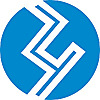ARTICLE AD BOX

The concept of owning fractionalized real-world assets (RWA) has gained significant traction in recent years, especially in high-end art and real estate. To this point, iconic paintings, such as Jean-Michel Basquiat’s “The Warrior,” were recently fractionalized and sold to investors for shares as little as $20—before the piece was eventually auctioned for over $41 million, representing a profit of 32%.
In another analogous example, the fractional ownership of Andy Warhol’s “14 Small Electric Chairs,” an artwork valued at approximately $5.6 million, was offered to interested individuals with varying budgets. Similarly, platforms like RealT enable fractional investing in real estate properties, having tokenized over 200 homes in the US and catering to over 10,000 investors across more than 100 countries, where investors receive weekly rent distributions and can vote on decisions regarding the properties they own.
The trend above seems to be driven by a few key factors. First, fractionalization is opening up a new, highly closed market to a new breed of investors, especially those with modest means. Second, it allows those who can afford full ownership to earn rental income from assets when not in use. Finally, it allows investors to access a diverse portfolio of luxury goods and experiences.
However, for these fractional ownership models to work at scale, customers need to trust that the business is legitimate and that the assets they buy into are authentic and truly owned by the platform. Any hint of impropriety or misrepresentation could completely undermine the entire ecosystem.
Fighting Scams Using the Blockchain
The notion of scammers selling ownership rights they don’t possess is nothing new. One of the most famous examples is the Brooklyn Bridge scam from the early 20th century, where con artist George Parker would repeatedly “sell” ownership over the iconic New York landmark to gullible tourists and residents despite clearly not owning the structure himself.
For fractional ownership businesses dealing in luxury goods and high-value assets, an incident like this could be catastrophic for their credibility and trust. New technologies like the blockchain (especially when combined with robust regulations) can help resolve these bottlenecks by validating ownership — fragmenting it into secure digital tokens and ensuring complete transparency in the process.
Some potential RWA use cases unlocked by these modern approaches include the co-ownership of artworks (with the ability to have rotating displays/ownership periods); investing in shares of a particular VC capital fund and its portfolio companies, fractional tokenized ownership of commodities like precious metals; and fractional asset ownership in major infrastructure projects and developments.
One company that has taken the lead in this regard is the MultiBank Group. With a strong regulatory foundation, the company operates in over 25 global offices and holds more than 14 financial licenses worldwide. This extensive regulatory compliance and global presence have earned MultiBank Group a reputation as the ‘world’s most regulated derivatives broker.’ Moreover, the firm’s commitment to security and regulatory adherence has helped it attract over 1,000,000 active customers while achieving an average daily trading volume of $12+ billion.
In recent years, the MultiBank Group has expanded its suite of offerings by entering the crypto fray via ‘MultiBank.io,’ a platform aiming to create a comprehensive financial ecosystem that integrates traditional derivatives with innovative offerings, including crypto spot trading, tokenized stocks, commodities, and unique multi-asset derivative products.
Moreover, the MultiBank Group is actively exploring the tokenization and fractionalization of real-world assets (RWAs). This involves converting ownership rights of assets such as real estate, art, and commodities into digital tokens, which can be divided into smaller fractions, making high-value investments accessible to a broader audience.
Lastly, it bears mentioning that under the leadership of Founder and Chairman Naser Taher, the MultiBank Group has achieved remarkable growth, boasting a paid-up capital of over $322 million while expanding its footprint across five continents.
Tokenizing the World’s Illiquid Assets
While still nascent, the potential market for tokenized real-world assets is staggering based on industry projections. To this point, the Transak State of RWA Tokenization Report 2024 highlights that the real estate funds sector is projected to reach a $20 trillion valuation by 2030, with tokenized real estate assets valued at $1.5 trillion. Similarly, the study notes that the private equity and venture capital industry will achieve a valuation of $7 trillion during the same time frame, with its tokenized digital assets constituting around $700 billion of that market.
As a result, companies with a foot in traditional and digital asset domains, like the MultiBank Group, stand to play a key role in pioneering and legitimizing these new RWA use cases at scale. Combining robust regulatory experience with innovative approaches to fractionalization and distribution could open the door to an era of true asset democratization. Interesting times ahead!
.png)
 4 months ago
2
4 months ago
2








 English (US)
English (US)